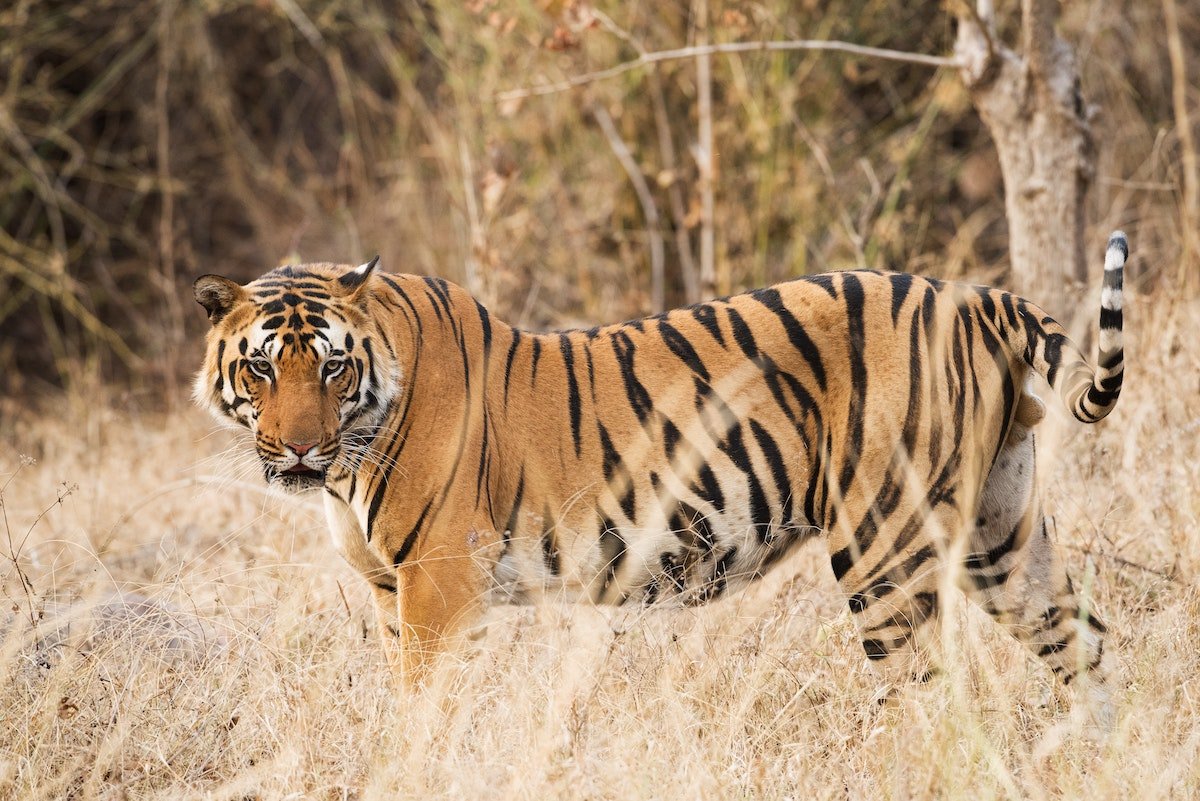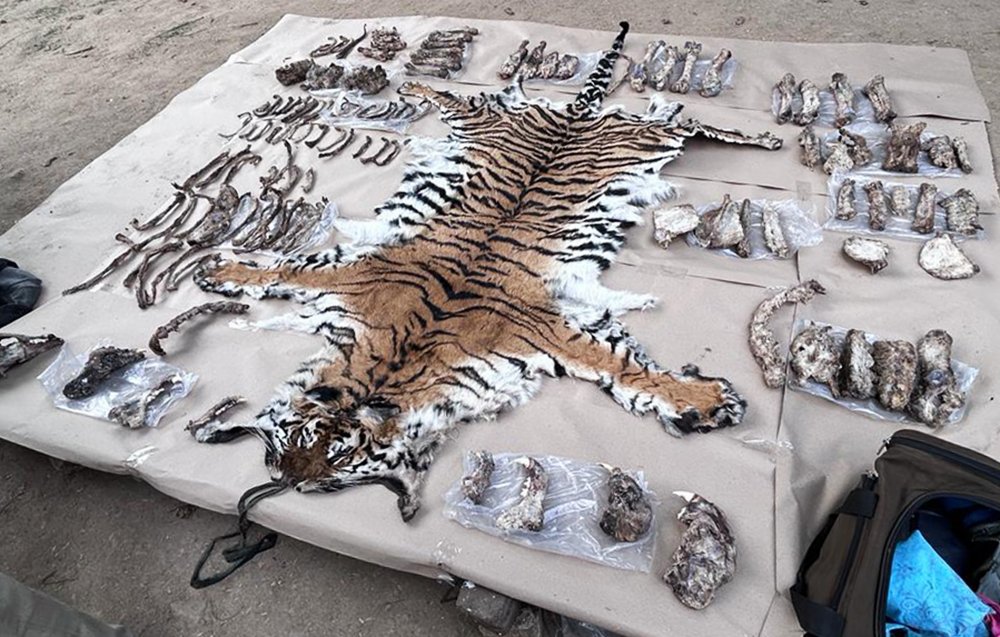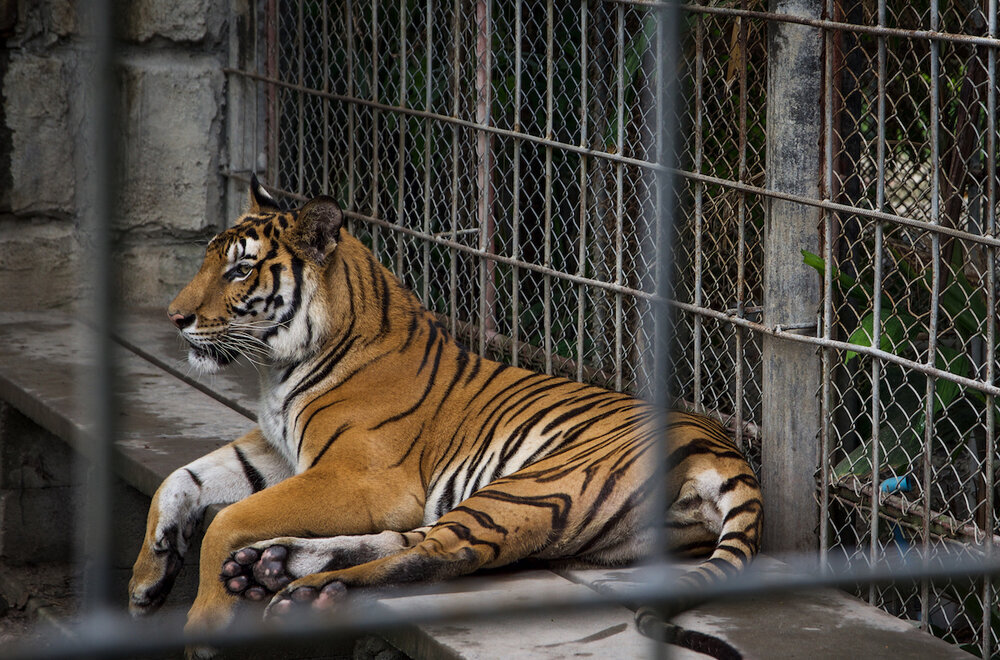Six Notorious Tiger Poachers Have Been Caught in the Act
A tiger skin, a tiger skeleton, and a leopard skeleton were also seized during the joint operation by the Tamil Nadu Wildlife Crime Control Bureau and Wildlife SOS.
Six members of a notorious big cat poaching gang have been apprehended in a sting operation after being caught with a 10-foot-long Bengal tiger skin, one tiger skeleton, and one leopard skeleton.
The arrests follow an anti-poaching operation led by the Tamil Nadu Wildlife Crime Control Bureau (WCCB) with intelligence from the Wildlife SOS Anti-Poaching Division.
The accused, four men and two women, reportedly traveled from Delhi, India’s capital city, to Ooty, a town in southern India's Tamil Nadu state to poach tigers from the rich forests of the Nilgiri biosphere reserve. It is estimated there are around 140-150 tigers remaining in the Nilgiris.
The poachers were intercepted in a village in the Sathyamangalam range by WCCB and investigators from Wildlife SOS. Under questioning, the accused revealed the locations of their hunting tools and jaw traps in the forest where they had slaughtered and skinned the tiger and leopard. The devices were reportedly discovered and dismantled by officials.
Credit: Wildlife SOS
The poaching gang is currently under custody and will be booked under relevant sections of the Wildlife (Protection) Act 1972, which provide tigers with the highest protection available.
“Wildlife SOS informants put their lives at risk to infiltrate the Bawaria communities for gathering vital intelligence. Which then helped us carry out the operation with the TN WCCB team in the Sathyamangalam area which resulted in the arrest of six tiger poachers,” said Kartick Satyanarayan, co-founder & CEO of Wildlife SOS & head of the Anti-Poaching Division.
“This operation will be significant in uncovering a larger network of poachers and putting an end to the crimes committed against India’s National animal, the tiger.”
But the threat to tigers is far from over.
In the last twenty years, there has been a 50 percent decline in the global tiger population. It is estimated that 5,574 tigers remain in the wild, with the species considered endangered.
The demand for tiger body parts including bones, claws, canines, and whiskers, which are used as ingredients in Chinese traditional medicine is encouraging poachers to target the big cats, said Geeta Seshamani, co-founder & Secretary of Wildlife.
Other major threats to tigers include the poaching and hunting of their prey, habitat destruction, with forests being destroyed for agriculture and farmed animals, and human-wildlife conflict due to tigers’ shrinking natural habitats - over the last century, tigers have lost 93 percent of their historical range.
Photo: Amy Jones/Moving Animals
Thousands of tigers are also being held captive in facilities, which operate under the guise of tourism and are marketed as zoos, conservation centers, and entertainment attractions.
Many of these places also breed tigers to satisfy the demand for body parts and wildlife tourism. Experts say that captive breeding does nothing to protect wild tiger populations, instead perpetuating the demand for tiger products, acting as a cover for illegal trade, and undermining enforcement efforts.
In the United States, it’s estimated there are between five and ten thousand tigers in captivity. However, a landmark bill to help protect big cats was recently signed into law, banning private ownership and restricting public contact such as cub handling.
Learn more about the tiger conservation by listening to this Species Unite podcast episode with Dr. K. Ullas Karanth, an emeritus scientist at the Centre for Wildlife Studies in Bangalore who led one of the longest-running (1986–2017) tiger conservation programs in the world.
We Have A Favor To Ask…
Species Unite amplifies well-researched solutions to some of the most abusive animal industries operating today.
At this crucial moment, with worldwide momentum for change building, it’s vital we share these animal-free solutions with the world - and we need your help.
We’re a nonprofit, and so to keep sharing these solutions, we’re relying on you - with your support, we can continue our essential work in growing a powerful community of animal advocates this year.
More stories:
Species Unite
A collection of stories of those who fight the good fight on behalf of animals.






Republicans in Congress are on the brink of enacting a plan that could spell the end of much iconic American wildlife.